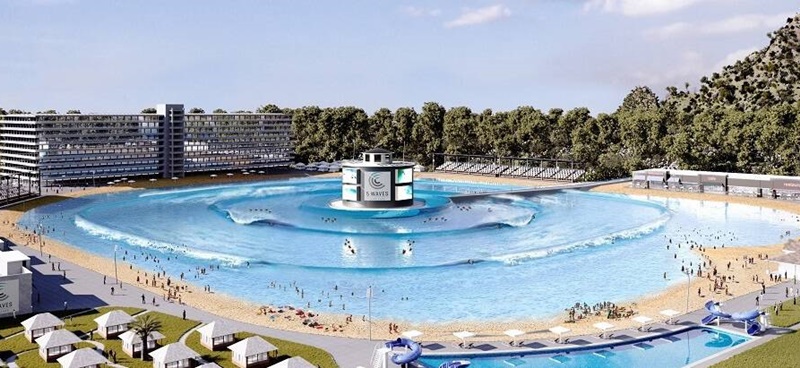 Surf Lakes – Australia’s first surfing wave pool © Surf Lakes
Surf Lakes – Australia’s first surfing wave pool © Surf Lakes
With an estimated number of 35 million surfers worldwide, surfer participation rates are considered small – just 0.5% of the global population – when compared to mainstream sport. The challenge for most non-surfers is accessibility to waves/the ocean due to being located many kilometres inland, or in regions where weather patterns do not produce ridable surf.
In a survey of non-surfers conducted by Surf Lakes in 2018, 83% of respondents said they would try surfing if:
- They had an opportunity to access a safe and controlled environment
- They had an opportunity to access quality waves
- They had an opportunity to access conveniently located sites (within 100kms/60 miles)
This is where Surf Lakes comes into play.
Surf Lakes is a concentric wave generation technology that creates multiple surfing breaks in one custom designed pool. Their technology is capable of producing a variety of waves shapes and ride lengths with varying degrees of difficulty that closely mimic natural ocean waves. Based in Queensland, Australia, the R&D facility is a prototype built with the purpose to prove the Surf Lakes’ 5 Waves technology. Commercial sites are earmarked in locations such as the Gold Coast, US, UK, Brazil and more.
Just how massive is the Surf Lakes wave pool?
Surf Lakes features the highest wave productivity in the market (2400 per hour), allowing surfers the opportunity to catch up to 10 waves per hour with over 200 people in the water at once.
The simultaneous variety of energy-proficient waves (eight different types) caters for five levels of surfing from beginner to pro simultaneously, allowing people of all abilities and surf craft preference to surf at the same time.
Using Computational Fluid Dynamics (CFD) modelling to predict wave movement
DHI contributed to the success of the Surf Lakes through our expertise in CFD modelling, combined with our surfing optimisation software Optisurf.
Surf Lakes built a 1:5 physical scale model of the surf pool in which DHI validated our CFD model to replicate the scale model results.
During the next crucial stage, we assisted with optimising the wave generating mechanism and surf performance characteristics at full scale focusing on the surf break in the pool called Occy's Peak. Our work helped Surf Lakes achieve the confidence to go ahead with full scale prototype and allowed for the surfing performance of Occy's Peak at full scale to match design expectations in the planning stage.
In their recent press release, Surf Lakes writes, 'Surf Lakes thanks Simon, Marcus and the team at DHI for their ongoing support, to get Occy in a barrel! Their CFD modelling and expertise have been invaluable to our progress.'
Watch these videos to see the CFD wave simulations, as well as Australian surfer and winner of the 1999 ASP World title Mark Occhilupo ‘Occy’ in action: